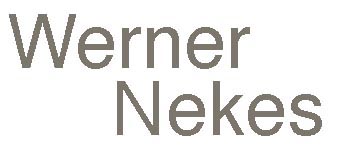Retrospektive Werner Nekes Kelek & Kurzfilme
Kelek
1968,16 mm, black and white, 60 min, silent.
"Kelek is Nekes' first film with a story. It is the story of a consciousness. This consciousness is concerned with only one thing: with seeing. Seeing is the topic of the film." (Wim Wenders, Filmkritik 2169, S.113)
"KELEK belongs to the 'structural' or 'minimal' cinema movement in that its content is subordinated to the viewer's perception and has no intrinsic significance. Unlike most examples of this genre, though, KELEK is never boring and is brought to a new awareness of the process of perception. The five basic shots of the film have to be filled by the viewer's own consciousness and there is absolutely no opportunity given for any spurious identification." --W.N.
"KELEK is a regular film. There's no more 'in that place' or 'in that scene' ... KELEK is a film
which moves exclusively on one level, that of seeing."--Wim Wenders, Filmkritik, February 1969.
"Werner Nekes is making the films that those who oppose their radical pronoucements to his radical aesthetics ought to be making, and yet are not." --Frankfurter Rundschau.
"Werner Nekes seemed to me the most important member of the Hamburg group; very preoccupied with form, with movement, with structure ... KELEK deals with shape, movement. The camera is steady, focused on a detail, a bridge, a street; the progression is slow, careful, calculated, abstract. A very pure visual music was coming to me from his film."--Jonas Mekas, Village Voice. (Aus: filmmakers cooperative catalogue No. 7)
further information about Kelek...
Start
1966, 16mm, Farbe, 10 Min.
Ein Rechteck grünes Gras wird mit einem Netz von Bewegungen überzogen.
Materialien: bewegte Kamera, fixierte Kamera, Destruktion der Emulsion und Toncollage.
Muhkuh
1968,16 mm, black and white, 14 min. (at a projection rate of 16 pictures per second), silent.
This film, conceived for an "oral culture" shows cows on a pasture in Northern Germany in one single shot. With interruptions, the cows seem to attempt to concentrate on the camera "...until at last two cars glide past in the background, the film's climax, gratefully received by an applauding audience…” (Peter Steinhart, Rheinische Post, Dec. 19, 1968).
"Films such as MUHKUH may seem a clumsy parody on certain art films. On closer scrutiny though, further strata of meaning are uncovered, for instance, the cows’ behavior is affected directly by the process of filming itself. The cows now react in a way quite similar to that of human beings suddenly placed in front of a camera. Werner Nekes consciously directs the behavior of the cows by the use of acoustic signals, which is in accordance with the methodical construction of his films in general." (Cyrus Kube, Aachener Nachrichten, Nov. 16, 1968).
put-putt
1967,16 mm, color, 10 min.
1. Being used at the expression of movement: a chicken.
2. Collage of music out of 200 different beginnings and ends of compositions.
Awards: Int'l Film Prize, Brasilia; Best
Films in Art, Germany Bambi, 1968.
Exhibition: Knokke-Le-Zoute, Belgium; Studentfilm, Mannheim; Oberhausen; London Short Film week; Stuttgarter Filmtage; Palermo sesta settimana internationale; Internationale Filmwoche, Mannheim; München European Filmmaker; Hamberger Filmschau.
Collections: Cinematheque Royale de Belgique; Internationes; Osterreichisches Film-museum; Institut für Jungenbildung Dornberg.Aus: canyon cinema, film/video catalog 2000
This film is a poetic endeavor about Life and Death. A brown hen was selected to convey motion. The soundtrack is a collage of approximately 200 beginnings and endings of different musical pieces.
The development of the hen's actions, under the motto "eat or die", are as the title suggests (put is the chicken's call, and putt is short for kaputt) set down in an arc of light. This corresponds to the exposition of Bogen: Black picture made up of grain, a hen pecking, seen from below through a pane of glass. (This angle of view was inspired by a take in the film "Entr'acte" by René
Clair, France 1924: a dancing ballerina is filmed from below, but when the camera tilts upwards the girl turns out to be a bearded man). The picture is cleared. It is covered with grain once more, black. White screen. Snow. Bleeding hen, decapitated, colors the snow red. Snow fails, covering the blood and the hen.
Gurtrug Nr. 1
1967, 16mm, colorIso, 12m,
(Organized for continuous projection.)
1. Demonstration of divergent movements of 26 people and two horses.
2. Periodic interruption by a second filmic plane.
3. A segment of music repeated in a row. "Since the films of Peter Kubelka, this is the first European film I really like." Stan Brakhage
Aus: canyon cinema, film/video catalog 2000
